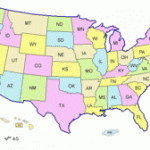Every year, hundreds of thousands immigrate to America. For many, America is the land of opportunity where they can make a better life for their families. But the American promise of “liberty and justice for all” never comes true in the lives of some immigrants. For people like Mai, justice in America is hard to come by.
Mai was lured to America on a false promise. Hoping she could support her family back in Vietnam, she accepted a “high-paying” restaurant job. But Mai’s employer smuggled her into America, telling Mai she’d have to work to repay the cost of her relocation. She worked grueling hours in the restaurant, receiving almost no wage. Mai lived in fear, knowing that her employer could have her family’s home taken away. Without legal status or any knowledge of English, Mai had nowhere to turn for escape. (Department of Justice, 2014)
Eventually, Mai’s employer was caught and pled guilty to forced labor trafficking. Mai and seven others were finally released from their abuse. But thousands more immigrants like her are manipulated by their employers in the “land of the free,” cheated out of their hard-earned work.
About Illegal Immigration
More than 8 million workers, like Mai, are illegal immigrants. But why don’t they just come to America legally? The answer is not simple. Many employers in America, particularly in the agriculture and manufacturing industries, continuously hire illegal immigrants—75% of whom are from Mexico or Central America. (Department of Homeland Security, 2012). Most of these immigrants are drawn by the chance to earn more money for their families. In fact, job opportunities for illegal immigrants far outnumber the legal visas that the United States offers each year. And the process for legally immigrating is difficult and expensive, often taking years to complete. Skilled and educated workers are favored, meaning that underprivileged immigrants who come to America out of financial need have little chance of a legal path. For them, illegally working in the United States can be the fastest and easiest option for improving their family’s situation. (USA Today, 2011)
About Immigrant Risk
No matter their legal status, immigrants, as humans, deserve dignity. But undocumented workers in America are at a much higher risk for labor abuses. Low economic status, language barriers, and fear of deportation make these workers extremely vulnerable to unfair work practices and outright exploitation. Undocumented workers who are injured on the job have no resources for compensation, and many others don’t even receive full wages. A landmark survey of undocumented Los Angeles workers found that more than three-quarters frequently worked off-the-clock or did not receive overtime pay. (The National Employment Law Project, 2013).
This wage theft is rampant among undocumented employees, but they can rarely fight back. Increased enforcement of immigration laws in the United States has made it easier for employers to threaten deportation in order to manipulate workers. With one simple call to local police, an employer can spark deportation proceedings that lead all the way up to the Department of Homeland Security.
José, a day laborer, was hired by an independent contractor to pave the parking lot of a local business. After ten hours of hard work, he asked for his pay. But the employer threatened him and drove off, returning soon after with the police. He falsely accused José of stealing from him, and José was taken into custody. Although he was eventually cleared of these bogus charges, the police still turned José over to Immigration and Customs Enforcement. Now José worries he’ll be forced out of the country, all because he asked for his fair pay.
Workers like José know that a small complaint about an employer can put more than just their job at risk—they risk their family’s entire livelihood in America. With mouths to feed back home, most laborers simply endure abuses at work in order to continue providing for their families. They choose to stay silent if the alternative is losing their income, or even being deported away from their children.
Mistreatment for migrant workers extends beyond just wages. Women working in low-pay agricultural or factory jobs are at greater risk for sexual harassment, coercion, and even assault. A recent PBS documentary called the sexual exploitation of female agricultural workers an “epidemic.” Corrupt supervisors threaten firing, violence, or deportation in order to take advantage of female workers. These women are forced to sacrifice their dignity for the sake of their jobs and families. (Frontline, 2013)
The Fight for Human Dignity
Undocumented men and women come to America for better opportunities, only to find that many Americans view them purely as criminals. Yet when they face criminal exploitation from corrupt employers, they have nowhere to turn for help. Some organizations are working to change this, seeking to pass or enforce laws that protect undocumented workers from employer retaliation. Others fight for immigration reform so that exploited workers no longer have to live in fear.
 At Women at Risk, we seek to build circles of protection around exploited people, ensuring safety and dignity for the women and families who are denied basic human rights in our own country. Our Civilian First Responder conference offers people like you the chance to be an advocate for those in your community who are at risk of exploitation. By attending a conference, you can learn to recognize risks like these, hiding in your own community.
At Women at Risk, we seek to build circles of protection around exploited people, ensuring safety and dignity for the women and families who are denied basic human rights in our own country. Our Civilian First Responder conference offers people like you the chance to be an advocate for those in your community who are at risk of exploitation. By attending a conference, you can learn to recognize risks like these, hiding in your own community.
If there are immigrant families in your community, build relationships with them. Find out ways you can help them feel more at home—perhaps they have experienced unfair treatment at work. Or maybe they’d simply like to be welcomed in their neighborhood. From the organizational to the individual level, we all play a part in making America a place of “justice for all.” Each one of us can be a voice for the voiceless.






